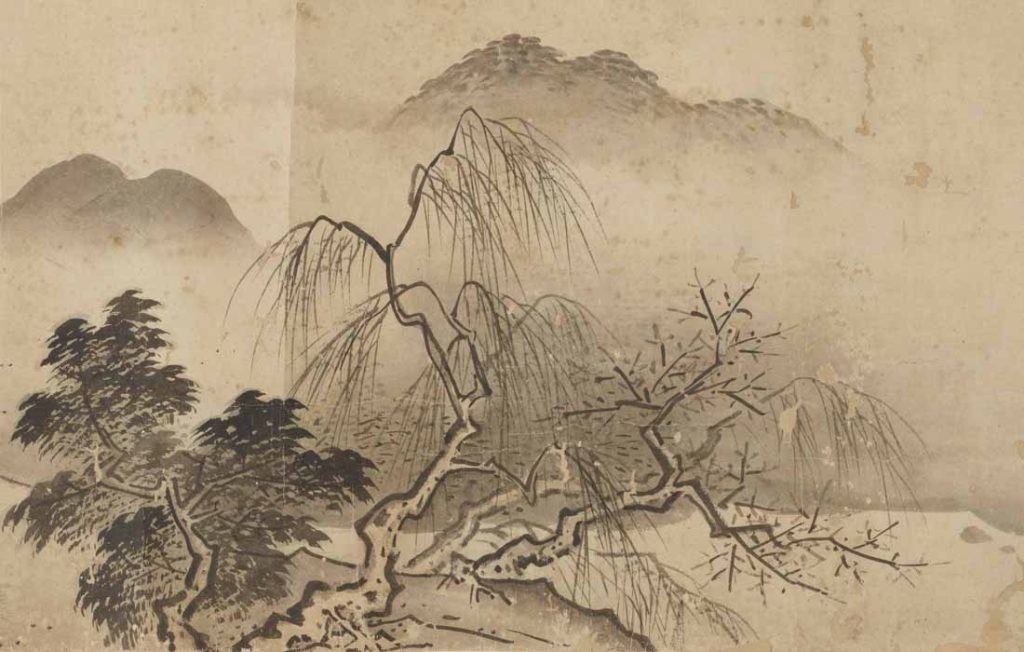
Unkoku Tohan (1635-1724), River Landscape, Edo period, late 17th-early 18th century, handscroll,
ink and color on paper, Gift of Charles Lang Freer
Mind Over Matter: Zen in Medieval Japan, National Museum of Asian Art
March 5–July 24, 2022
This exhibition showcases the breadth of the museum’s medieval Zen collections, highlighting rare and striking works from Japan and China to illustrate the visual, spiritual, and philosophical power of Zen. Rooted in the culture of medieval Japan, the lessons of Zen have become an important part of contemporary American life, as applicable today as they were in premodern times.
Monastic Zen painting in medieval Japan (ca. 1200–1600) is one of the great artistic traditions of East Asia and of the world. The abbreviated, seemingly impromptu paintings in monochrome ink have influenced artists and enthusiasts for centuries. Many of the most accomplished artists of this era—Mokuan, Ryōzen, Shūbun, Sesshū, Sesson, and many others—were Zen monks credited by later generations as the creators of a unique and remarkable legacy of ink painting. Indeed, Zen monk-painters inspired a number of the most important professional painting lineages of Japan’s early modern period (ca. 1600–1868) and formed a thematic backbone of Japanese art and cultural identity in modern times.
To learn more about some of the key aspects of Zen, an online interactive experience Voices of Zen: Contemporary Voices accompanies the exhibition. The interactive features three artworks from the exhibition—a splashed-ink landscape by the sixteenth-century artist Sōen, dynamic calligraphy by the rebellious monk Ikkyū, and an early sixteenth-century tea bowl fixed using kintsugi repair.
Read more, click here
